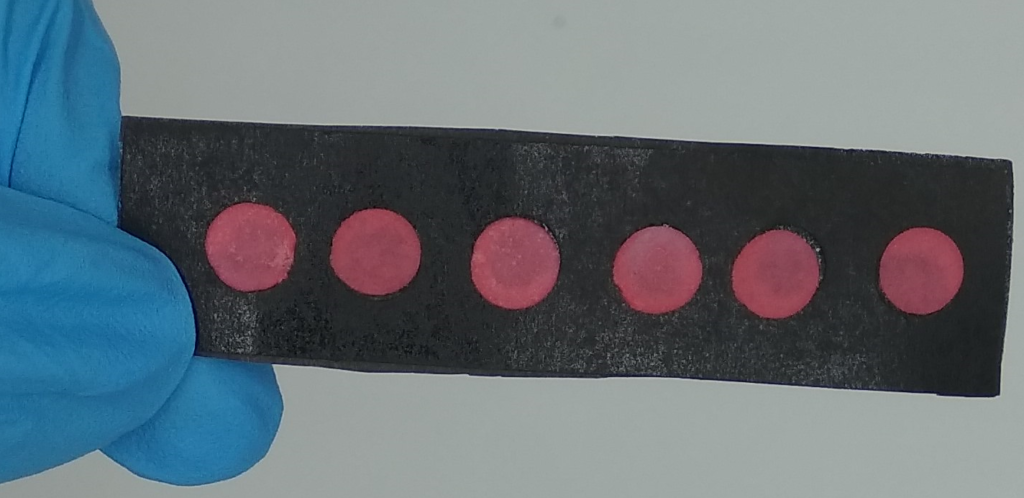A team of researchers has built a miniature iron sensor using little more than filter paper, spray paint, and an ordinary hole punch. They hope that their innovation, detailed in the Canadian Journal of Chemistry, will provide fast, low-cost field tests for people around the world.
Tracking chemicals in soil and water is important in a number of sectors, from farmers assessing the fertility of their soil to mining companies looking to find valuable ore or to comply with regulations on pollution. Such tests usually involve taking soil or water samples to a lab supplied with spectrophotometers, chromatographs, and other advanced equipment.

A microfluidic paper-based analytical device (µPAD) created by researchers from Xiangtan University can quickly measure the level of iron in water (Photo | Peng Yu)
But transporting the samples and running the tests can be costly and time-consuming. Many researchers are looking at alternatives that can provide faster results at a lower cost. Microfluidic paper-based analytical devices—µPADs—are one of these alternatives.
“μPADs are characterized by their simplicity, portability, miniaturization, in-field capability, and low cost compared to traditional measurement methods,” said Professor Peng Yu, of the School of Materials Science and Engineering at Xiangtan University, senior author on the paper.
Just as pH paper changes colour to indicate how acidic or alkaline a sample is, µPADs can be used to quickly test for nutrients such as nitrogen and phosphorus as well as contaminants such as heavy metals.
Despite their small size, µPADS can be very complex with tiny channels or reservoirs that contain small amounts of chemical reagents, including the colour-changing indicators that provide a readable signal. So while each individual device may cost very little, the manufacture of µPADs still requires specialized techniques such as screen printing or photolithography.
In contrast, the devices created by Yu and her team could be made using equipment you may already have in your home. They began by spraying ordinary printer paper with paint from an aerosol can to make it water-resistant. They then punched holes in this backing with an ordinary hole punch, which they filled with circles of low-cost filter paper. Double-sided tape held the assembly together.
Into each circle they placed a drop of a solution containing 1,10-phenanthroline monohydrate, a chemical that turns bright red when it reacts with dissolved iron. The intensity of the colour was measured by taking a photo with an ordinary smartphone camera and analyzing it using open-source software.
By calibrating the smartphone readings to solutions of known concentration, the team showed that their device could detect iron concentrations as low as 0.9 mg/L. That’s not nearly as sensitive as traditional lab equipment, but Yu said that the low-tech approach has its advantages.
“Such a device provides the ability for fast detection of heavy metals without access to an analytical chemistry lab,” she said. “This could be very useful, particularly in places where such infrastructure is hard to come by.”
In the future, the team hopes to extend its work create more sensitive µPADs that could detect iron at even lower concentrations as well as assay multiple elements at the same time. If successful, field workers could one day carry around low-cost, pocket-sized analytical chemistry labs, making their jobs faster, easier, and more efficient.
Read the full study: A paper-based colorimetric microfluidic sensor fabricated by a novel spray painting prototyping process for iron analysis in the Canadian Journal of Chemistry.




